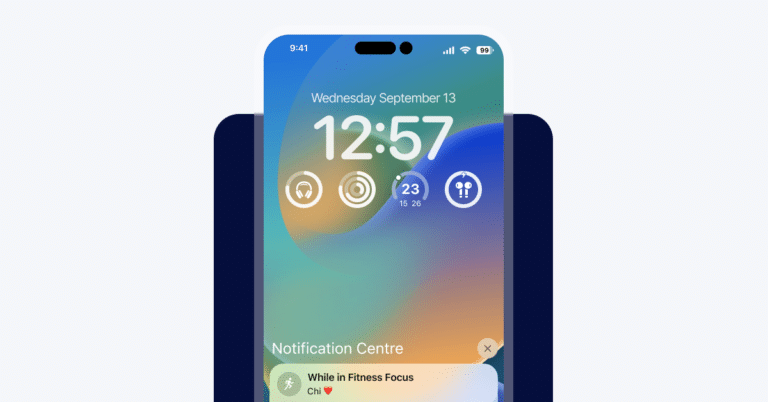Just when you thought you got all the news that came from WWDC 2022, there’s still more to know. We’ll review eight additional changes that have been (or will be) introduced with iOS 16 in the coming year – and what they mean for marketers. Also check out the latest SKAdNetwork (SKAN) 4.0 updates!
1. Collaboration API
The Collaboration API will help with link sharing to enable live collaboration. Apple has had live collaboration features in their apps for a while, but now they’re expanding and integrating them more — complete with a Share Sheet and a third-party API to integrate your own apps. This will allow for unique, anonymized user IDs to protect user privacy and, ultimately, much more direct collaboration than the past.
What it means for marketing teams
You will be able to use the Shared with You framework and Collaboration API to bring your app’s collaboration features into Messages and FaceTime. You’ll also be able to highlight material from your app that users have shared in Messages in a new Shared with You area within your app.
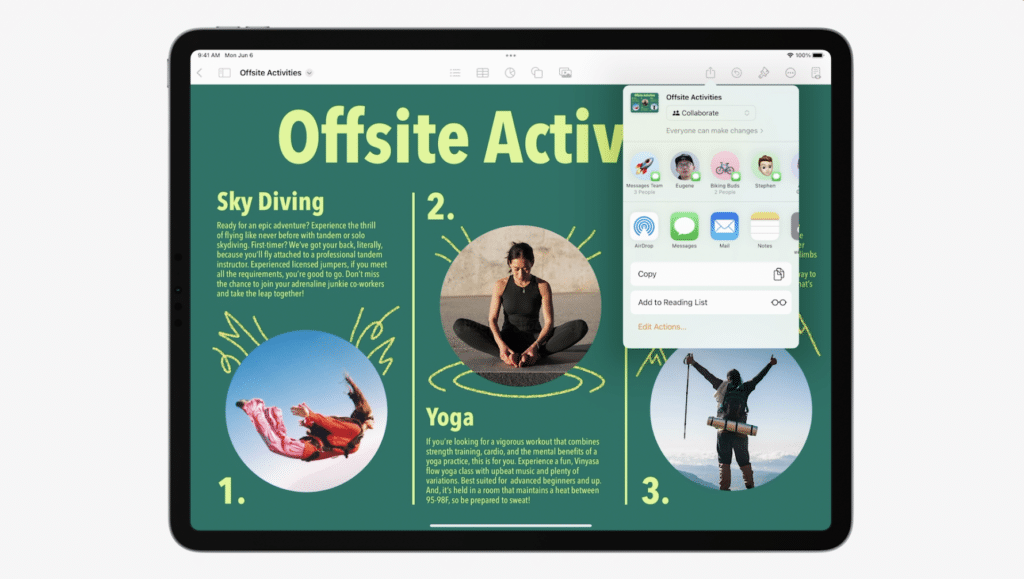
2. Lock screen personalization
Finally! The lock screen on iOS 16 will be entirely transformed. The new lock screen will have a new widget system that looks strikingly similar to the personalization option on the Apple Watch. It will feature animations, fluid transitions, and plenty of customization options.
The best part is that you’ll be able to create and effortlessly interchange multiple lock screens. You will be able to choose from a variety of pre-made designs or create your own, including photos and widgets. Plus, the widget area under the time will give you quick access to updated information from your favorite apps without needing to unlock your device. From a user perspective, this redesign means that (repeated) notifications will no longer be as big of a nuisance.
What it means for marketing teams
From a marketing standpoint, the new lock screen may create more of a headache for brands that use push notifications. It’s going to be important for marketing teams to find ways to make their content more accessible from either the home screen or lock screen — or both.
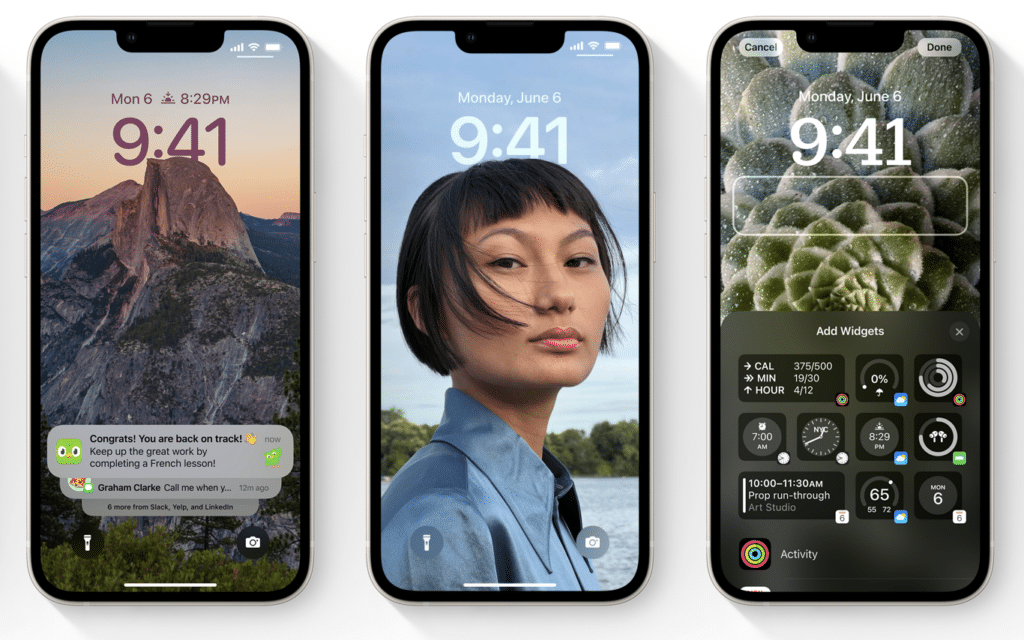
3. Live Activities API
Notifications will also be getting an update with iOS 16. In this new version of iOS, new notifications will appear from the bottom of the screen rather than the top. The Live Activities API will allow applications to update the lock screen with live-event data rather than spamming notifications.
For example, you’ve probably interacted with a ride-sharing app that bombards you with a stream of notifications about your driver’s status. Soon enough, these notifications will be part of a singular widget with real-time updates.
What it means for marketing teams
This update may reduce the quantity of notifications your users receive — but we also anticipate it will improve the quality and attention-grabbing aspect of app notifications, especially for app reengagement and retention.
4. App Intents
The idea of App Intents is to help users discover what apps can do outside of the app itself.
Spotlight will gain actions, including the ability to start or end a timer, and will surface content from even more built-in and third-party apps, including results from Messages, Notes, and Files.
The Shortcut, Siri, and Spotlight sections will flag what you can do within an app outside of the application itself.
For example, if you wanted to order something on Amazon without App Intents, you would need to go to the Amazon app and search within the app. With App Intents, Amazon will be able to pop up a hint at the bottom of the screen and then use Siri to place the order outside of the app.
What it means for marketing teams
App Intents will allow users to accomplish things related to your app by voice or tap, in a quick and easy manner. App Intents is a new Swift-only framework that aims to make it quicker and easier to create actions. You will also be able to use App Intents to develop new App Shortcuts.
User setup will not be required for App Shortcuts; they’ll be available as soon as your app is installed on iOS, iPadOS, or watchOS. And because App Shortcuts supports parameters and synonyms, it will help people interact with your app through Siri without needing to say specific phrases.
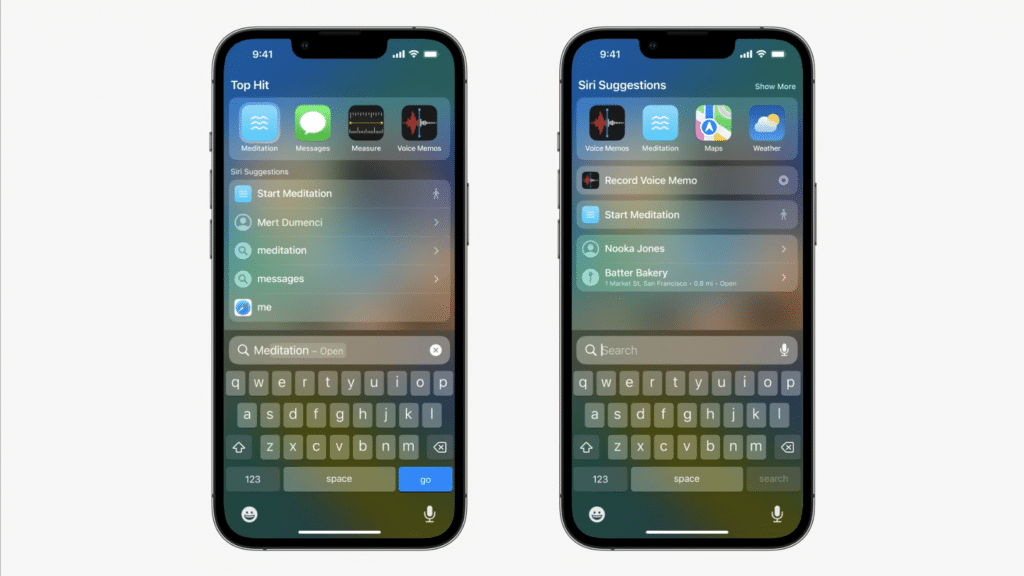
5. Web push in Safari
Support for web push notifications is coming to Safari. It will require users to interact to trigger the prompt, so it’ll be interesting to see how these notifications will be received by users and marketers alike.
What it means for marketing teams
You’ll soon be able to send notifications to website or app users who use Safari 16 on macOS 13 — even when Safari isn’t running. While this is already possible with other browsers, Safari has been a holdout. With this new support slated for 2023, you can use web push notifications to reach a wider audience and deliver timely content or product updates.
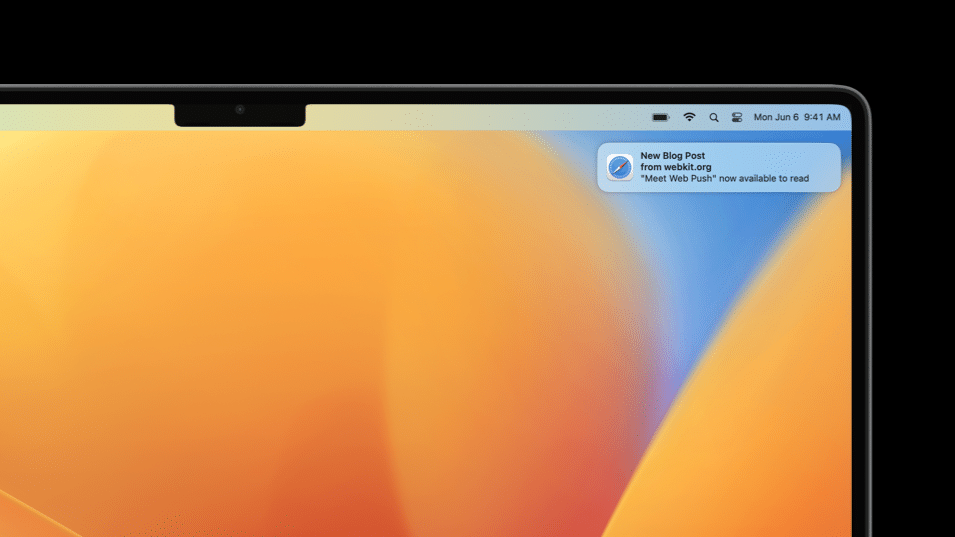
6. Apple Pay updates
Apple Pay is also getting some updates. First, they’re adding the ability to track orders through notifications about shipping and delivery dates.
Second, a new “Pay Later” option will automatically split the cost of an in app or online purchase with Apple Pay into four payments over the course of six weeks. Apple’s entry into the buy now, pay later (BNPL) market extends marketers’ potential customer base, especially among younger customers who want the freedom to make a purchase now and pay for it as they get their next paychecks.
What it means for marketing teams
Offering BNPL to clients can increase conversion rates and average checkout ticket size, so this feature is definitely something to keep in mind when building personalized marketing campaigns.
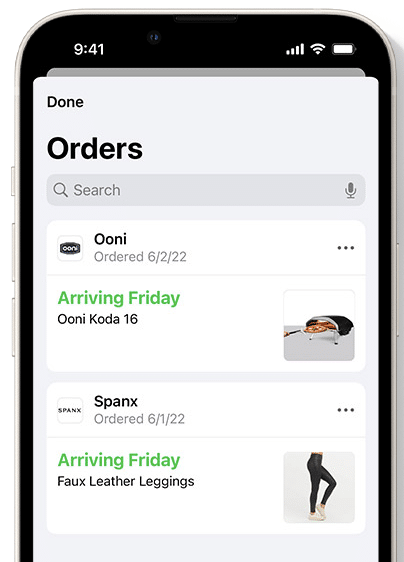

7. Pasteboard access changes
As a reminder, with the introduction of iOS 16, anytime the pasteboard is accessed for content from another app, the operating system will present a default user prompt. With the pasteboard access changes, users will have more control with cross-app copy and paste. When the user taps that button on the interface, the user will not need to get the edit button working to copy and paste. In addition, the app will make a user permission prompt to confirm users intend to paste, and pasting via the Edit Options menu will not require a permissions prompt.
What it means for marketing teams
Even though iOS 16’s new pasteboard permission feature will very likely impact user experiences, marketing teams can rejoice in knowing that the CTA button can be customized to some extent — with the stipulation that it has to say “Paste” and/or display the paste icon on the button. This means more opportunities to customize the pasteboard experience for your users.
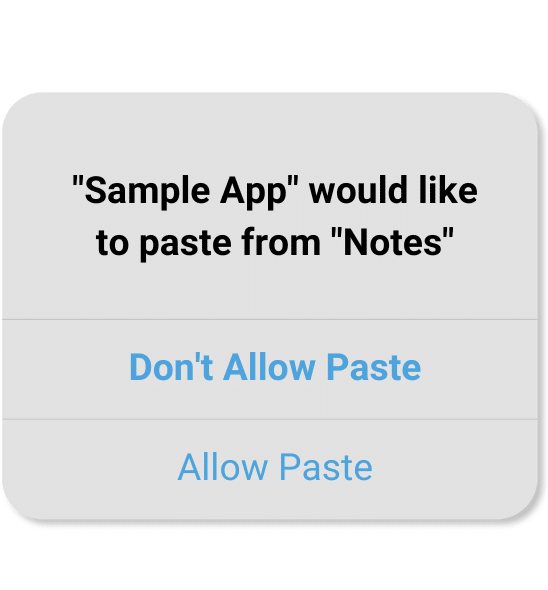
8. In-app purchase updates
A variety of new or updated APIs will make it easier to reach customers at the right time with the right messages.
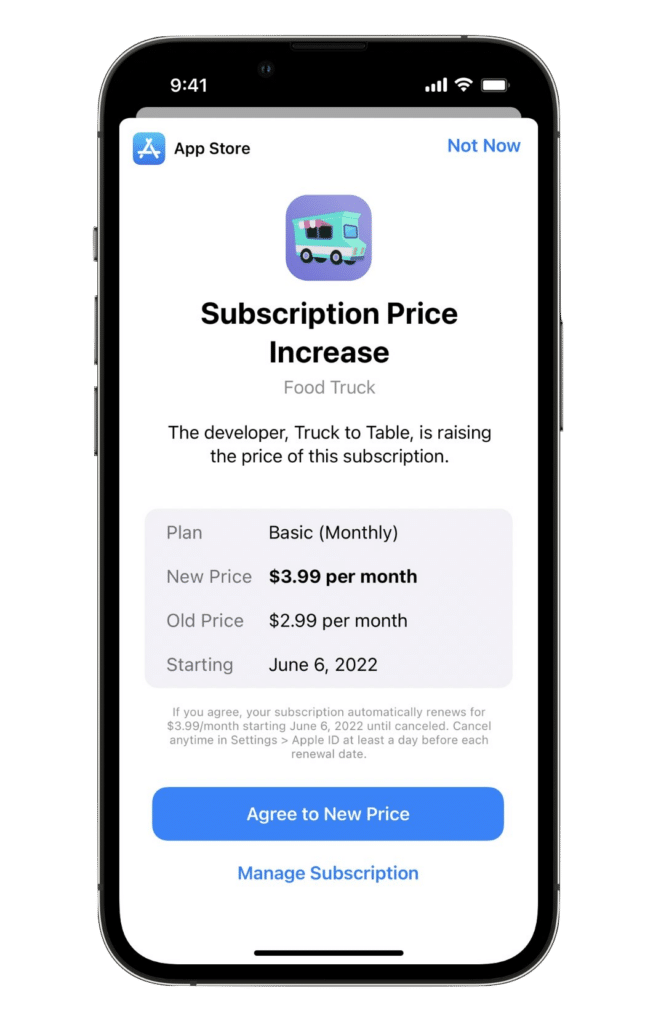
App Store Connect API
This will allow you to manage in-app purchases; create, edit, and delete subscriptions via API; manage pricing and submit subscriptions to review; and create offers and promo codes.
For example, a fitness app needs to increase its subscription price but doesn’t want to disturb users at the moment they are choosing a workout. Using the API, the app can present the pricing at a later time so the user is more likely to agree with the increase.
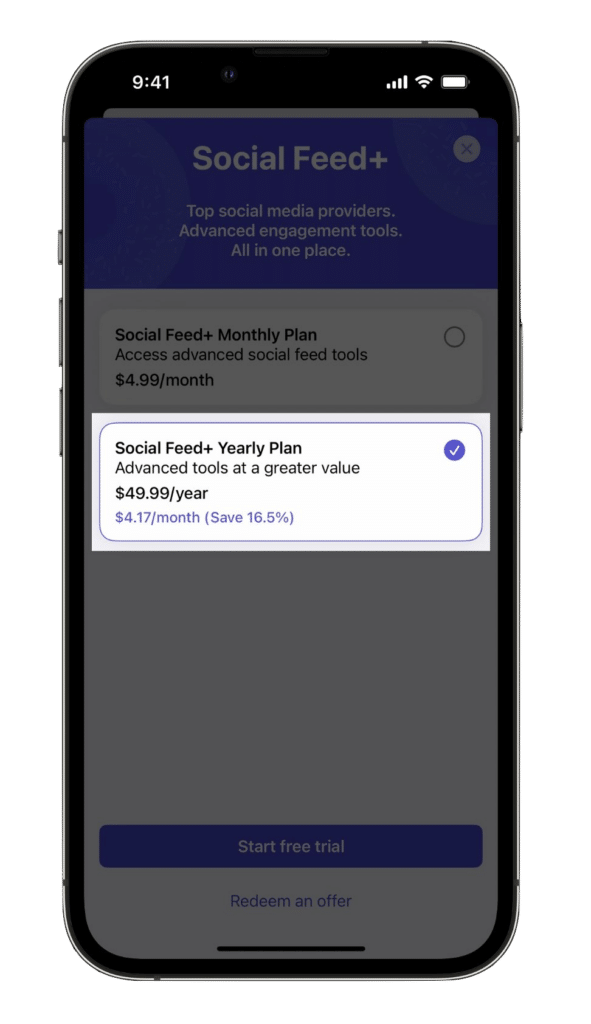
The Transaction API
This will help the transition of subscription types, like paid to premium or free to paid. Price locale is a property for displaying derived numbers, like how much your annual subscription costs per month. So, if your app has an annual subscription increase, you can show users the adjusted monthly price for an annual subscription.
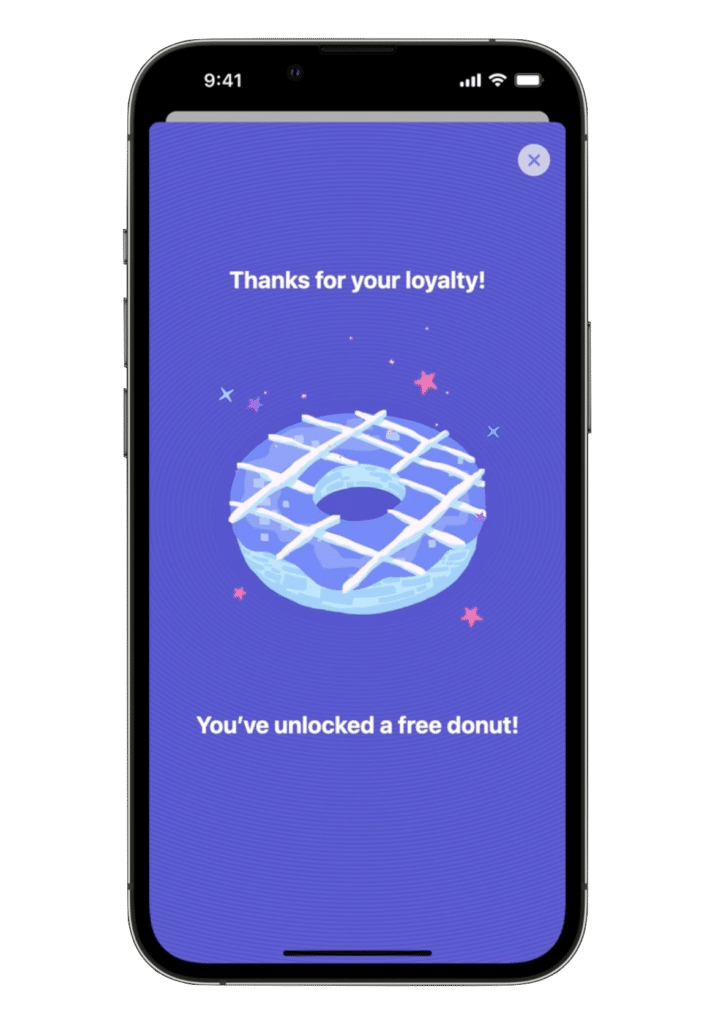
Recent Subscription Start Date
This gives you the most recent period of the continuous subscription. In this context, continuous means there was no more than a 60-day gap between any two subscribed periods. The Recent Subscription Start Date is useful for marketing teams to determine customer loyalty and reward users.
Note: This property is not meant to be used to determine the total number of days your customer was subscribed.
iOS 16 changes mean (mostly) more transparency
Overall, it’s become apparent that Apple plans to minimize the data that apps require to function and plans to offer greater transparency into how apps use said data. Still, it’s hard to predict exactly how this year’s changes will impact how marketers interact with consumers on mobile devices.
Relying on a future-proof mobile linking and attribution partner (like Branch) to navigate these tricky changes — and future ones — removes uncertainty and makes it easier for you to focus on what you do best: mobile growth.
Learn more about what to expect from iOS 16 in our mobile growth webinar.






















